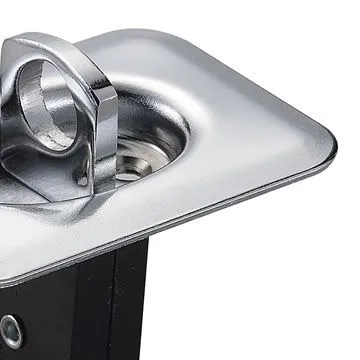- Afrikaans
- Albanian
- Amharic
- Arabic
- Armenian
- Azerbaijani
- Basque
- Belarusian
- Bengali
- Bosnian
- Bulgarian
- Catalan
- Cebuano
- Corsican
- Croatian
- Czech
- Danish
- Dutch
- English
- Esperanto
- Estonian
- French
- German
- Greek
- Hindi
- Indonesian
- irish
- Italian
- Japanese
- Korean
- Lao
- Malay
- Myanmar
- Norwegian
- Norwegian
- Polish
- Portuguese
- Romanian
- Russian
- Serbian
- Spanish
- Swedish
- Thai
- Turkish
- Ukrainian
- Uzbek
- Vietnamese
Դկտ . 28, 2024 04:36 Back to list
grid ceiling material names
Exploring Grid Ceiling Material Names A Comprehensive Overview
Grid ceilings, also known as suspended ceilings or drop ceilings, have become increasingly popular in modern architectural and interior designs. They serve not only a practical purpose but also contribute to the aesthetics of a space. One of the most intriguing aspects of grid ceilings is the variety of materials used in their construction. Understanding these materials can help architects, builders, and homeowners make informed choices about their ceilings. This article aims to explore various grid ceiling material names and their implications for design and functionality.
1. Mineral Fiber
Mineral fiber tiles are one of the most common materials used in grid ceilings. Composed of natural and synthetic minerals, these tiles excel in sound absorption and fire resistance. Their lightweight nature makes them easy to install and replace, and they often come in various textures and colors. Mineral fiber tiles are particularly suitable for office spaces and commercial buildings, where acoustic control is paramount.
2. Gypsum Board
Gypsum board ceilings, often referred to as drywall ceilings, offer a seamless finish that can be painted or textured to match the room's decor. They are known for their durability and fire resistance. Gypsum boards can be installed directly onto the ceiling framework or suspended in a grid system. This versatility makes them a popular choice for both residential and commercial applications.
3. Metal Panels
Metal grid ceilings present a sleek and modern aesthetic. Typically made from aluminum or steel, these panels are lightweight, durable, and resistant to moisture. They are often used in high-traffic areas or places that require strict hygiene standards, such as hospitals and kitchens. The reflective surface of metal panels can also enhance natural light, making spaces feel more expansive.
4. Wood Panels
Wood panel ceilings bring warmth and natural beauty to any space. Available in various wood species, these panels can be used to create a rustic or contemporary look depending on the finish. Wood panels are often treated to resist moisture and insects, making them suitable for kitchens and dining areas. The use of wood promotes a cozy atmosphere, ideal for residential settings.
grid ceiling material names

5. PVC Panels
Polyvinyl chloride (PVC) panels are gaining popularity due to their affordability and ease of maintenance. These panels are resistant to moisture and do not require painting or staining, making them an excellent option for areas prone to dampness, such as basements and bathrooms. PVC panels are available in various designs, including those that mimic the appearance of wood or metal.
6. Fabric-Wrapped Panels
Fabric-wrapped panels offer an innovative solution for enhancing acoustics and aesthetics. Typically made by wrapping a sound-absorbing core with fabric, these panels add a soft texture to the ceiling. They are available in an array of colors and patterns, making them ideal for creative environments like theaters or design studios. Furthermore, they contribute to sound control without sacrificing style.
7. Polystyrene Panels
Polystyrene panels, often used in residential applications, are lightweight, budget-friendly, and versatile. They can be painted and are available in various patterns, making them suitable for DIY projects. Polystyrene is not as durable as some of the other materials but remains a popular option due to its low cost and ease of installation.
8. Acoustic Tiles
Acoustic tiles are specifically designed to enhance sound quality in a space. Often made from mineral fiber or other sound-absorbing materials, these tiles help reduce noise pollution in busy environments. They are ideal for conference rooms, schools, and other places where sound clarity is essential.
Conclusion
The variety of materials available for grid ceilings offers something for every preference and requirement. From the acoustic properties of mineral fiber to the sleek look of metal panels, the choice of materials can significantly impact the functionality and aesthetic appeal of a space. When selecting grid ceiling materials, it is essential to consider factors such as sound absorption, fire resistance, and maintenance needs. By understanding the different options available, architects and designers can create spaces that are not just visually appealing but also meet practical demands. Whether for commercial or residential settings, grid ceilings provide a versatile solution to contemporary design challenges.
-
Transform Interiors with PVC Gypsum Ceiling: A Stylish, Durable, and Moisture-Resistant SolutionNewsMay.19,2025
-
The Smart Interior Upgrade: Discover the Durability and Versatility of Gypsum Ceiling Access Panel SolutionsNewsMay.19,2025
-
The Smart Choice for Interior Design: Discover the Value of PVC Gypsum Ceiling SolutionsNewsMay.19,2025
-
Mineral Fiber Ceiling Tiles: The Smart Blend of Performance and AestheticsNewsMay.19,2025
-
Mineral Fiber Ceiling Tiles: The Superior Choice Over Gypsum for Sound and Fire SafetyNewsMay.19,2025
-
Mineral Fiber Ceiling Tiles: Eco-Friendly Strength and Style for Every CeilingNewsMay.19,2025







